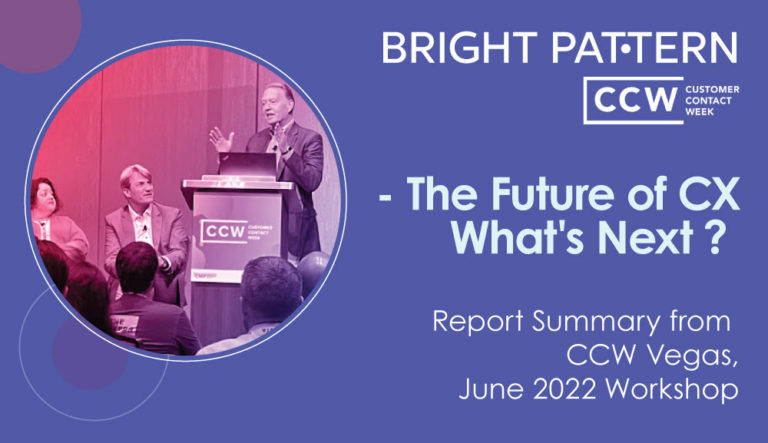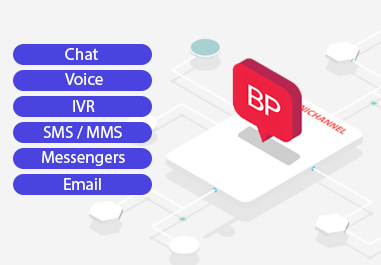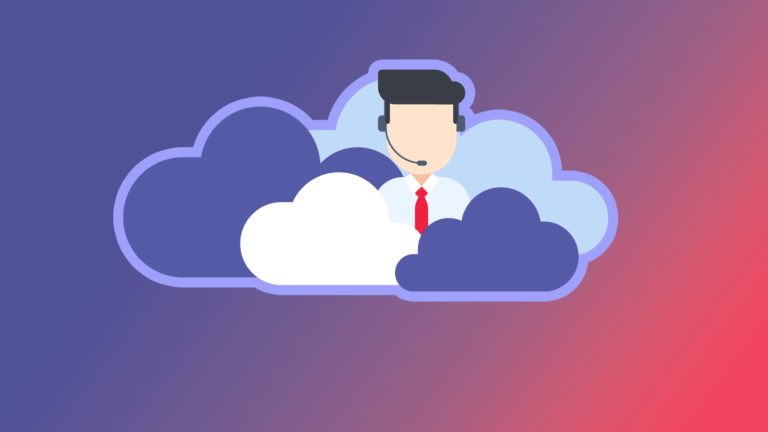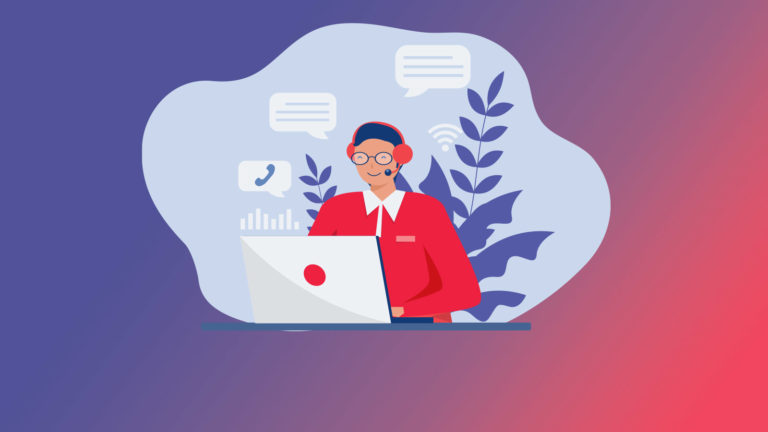At CCW Vegas 2022, the world’s largest contact center event, Bright Pattern presented an informative workshop discussing the future of customer experience technology and how to adapt technology to meet the needs of the new digital age. The workshop featured an esteemed panel of experts, including Othmar Mueller von Blumencron, Senior Vice President of Sales and Marketing at VIP Desk, and Jessica Osborn, IT Support Services Operations Manager at Randstad. The workshop also featured insights from the audience about the various topics presented on screen. In this multi-part blog series, we recap the key points from the Bright Pattern workshop.
Topic: What’s Next with SMS, Chat, and Messengers
To start off the presentation, Ted Hunting, SVP of Marketing at Bright Pattern, presented key stats. Here are the key stats that were presented during the presentation.
Chat
- Live chat is the number one service choice for shoppers between 18 and 49 years old. (Gartner)
- Live chat costs companies 15-33% less compared to phone support
- Chat was #1 preferred channel but now #2 to Self-Service (COPC 2022)
- #1 Digital Channel Today but expected to be eclipsed by Messenger channels over time
Messengers
- McKinsey noted that digital and mobile adoption has vaulted forward 5 years in 8 weeks due to COVID)
- 2.8 billion mobile phone messaging app users worldwide in 2021
- Today: 1.3 billion users on Facebook Messenger, 2 billion users on WhatsApp, 1.2 billion on WeChat.

One particularly important key takeaway is that messengers will overtake webchat in the future, which is still the #1 digital channel with asynchronous messaging coming.
Jessica, one of the panelists, noted that the choice of chat, SMS, and messengers is partly generational, with younger people gravitating more toward messengers than chat. All groups, however, are making a transition from voice to chat to messengers.
Ted noted a couple innovative customers using messengers. One was a South Africa pizza chain allowing customers to use a pizza emoji over Facebook Messenger to order their favorite pizza by leveraging IBM Watson.
Another innovative customer using messengers was a European luxury retailer that had people chatting online during the pandemic. These people were interested in products, like a sweater and purse combination, and were able to leverage in-store personnel (who otherwise would have been laid off during the pandemic with stores closed) to make private videos using WhatsApp that could then be shared with customers chatting online. The luxury retailer effectively innovated their business model during the pandemic using messengers and connecting in-store personnel with the contact center chat function for personalized digital CX with a human touch.
Ted also shared that the world’s largest shipper, MSC (Mediterranean Shipping Company) in Mexico, is using WhatsApp messaging to communicate real-time shipping status. Finally, the largest hair restoration company innovated their business model by using SMS to allow customers to share pictures of their scalp to specialists so that specialists can further assist customers. After views from the panelists and Ted, the workshop moved to sharing a short, innovative demo showing how a customer could interact with an agent over both SMS and messaging channels. A link to the demo can be found here.
Panelist Views:
Othmar noted that although chat was the most popular digital channel, its use increased even more during the pandemic. He mentioned that with live agent issues during the pandemic, chat became a channel where both consumers and companies providing support could win, because agents could handle multiple chats and a short wait was acceptable. Also, chat conversations could be more fluid versus a call that just “ends”. The shift to asynchronous messaging with persistent conversations happened over time. Othmar also noted that although messengers are a preferred channel for Generation Z, their luxury retail customers proceeded to adopt and show a preference for messengers at a level that was almost similar for their older clientele. This is true on different messaging platforms such as Apple Business Chat, Facebook Messenger, etc.
After Othmar’s insights, Ted commented: Othmar’s point about a continuous conversation can lower friction and effort, and allow people to “find time” as they can start a conversation on a messenger, head out on an errand, and then come back to the conversation later when they are free to continue the conversation.
Jessica added: We like to give the most touchpoints we can to customers – not just as a call center, but also as a strategy to provide customers with as many ways to get an answer as possible. Jessica noted that messengers and SMS are important new channels to support, but call centers need to make sure they are true omnichannel and not new silos. Companies need to offer both traditional channels like calls as well as SMS and messengers. Meeting your customers where they are, which is often on mobile devices as noted by McKinsey, is important as people are getting more used to messengers.
Othmar then added: We all want to use the same channels that we use to communicate in our everyday lives and with our families, so why not use these preferred channels in business too. We have family SMS and messenger conversations so we should be able to use our favorite channels in a business setting too. Fast, easy, and friendly channels of communication.
The Audience Chimed in with Their Views on Messengers, SMS, and Chat
Audience member #1: We are a financial institution in Mexico, and we used to use SMS for reminders only. Our chat channel in our geography was not very popular. But in the last 6 months, we started using messengers and it just took off. Now we find that 30% of our interactions are not through voice, but now through messengers.
Ted commented that we can not only learn from each other, but also from what other regions are doing. Latin America is leaping ahead to these new channels at a faster pace than other geographies.
Another audience member commented: We can use messengers to offer customers a seamless conversation. This conversation can keep going. If a customer has a question a month from now, they can reach out again. And as a business, this means we are always in touch with our customers.
Another member commented that all chat is not equal and how you do it is as important as the channel itself. She mentioned dumb bots being problematic as an example. Or an agent with too many chat sessions at the same time, which is equally as bad for CX.
Ted commented on a major US broker who does it well as an example of what is possible. Users can be routed directly to their “team” using skills-based routing for a very personal experience, and they even allow you to transfer money within the chat once the user is authenticated.
The Full Bright Pattern “Future of CX – What’s Next?” Workshop E-book
The full recap of the Bright Pattern “Future of CX – What’s Next” is available for download. Click here to access the full ebook.





